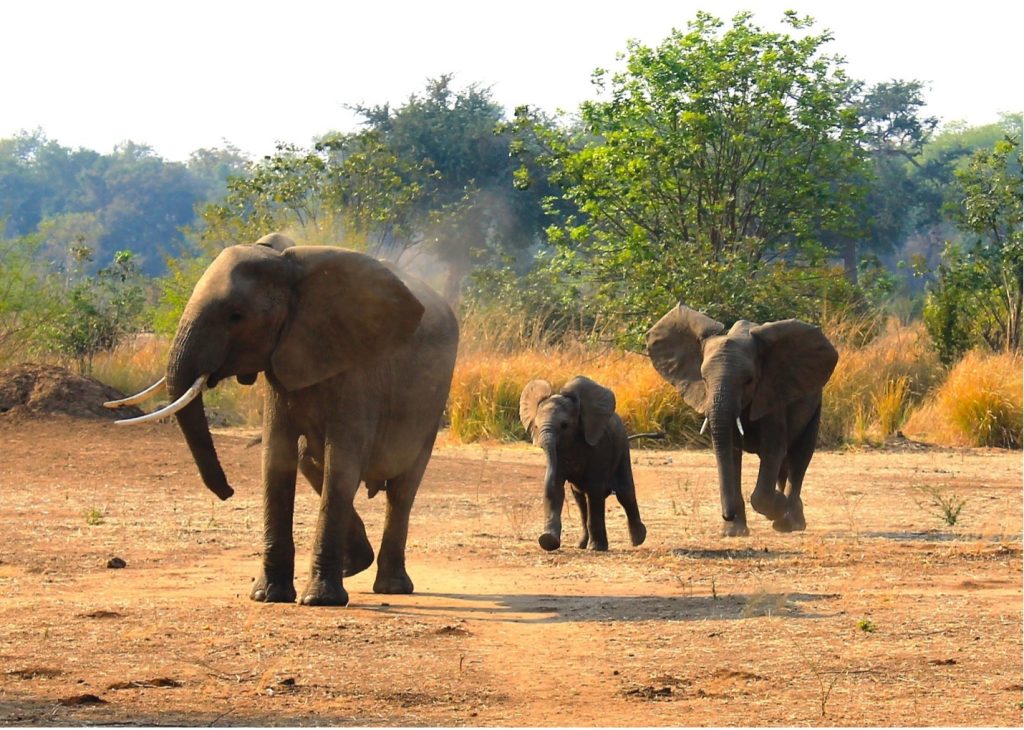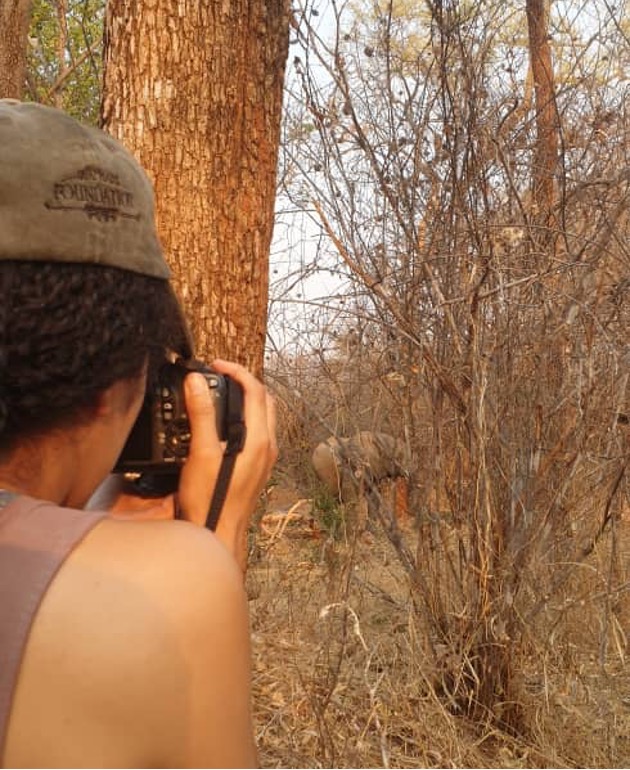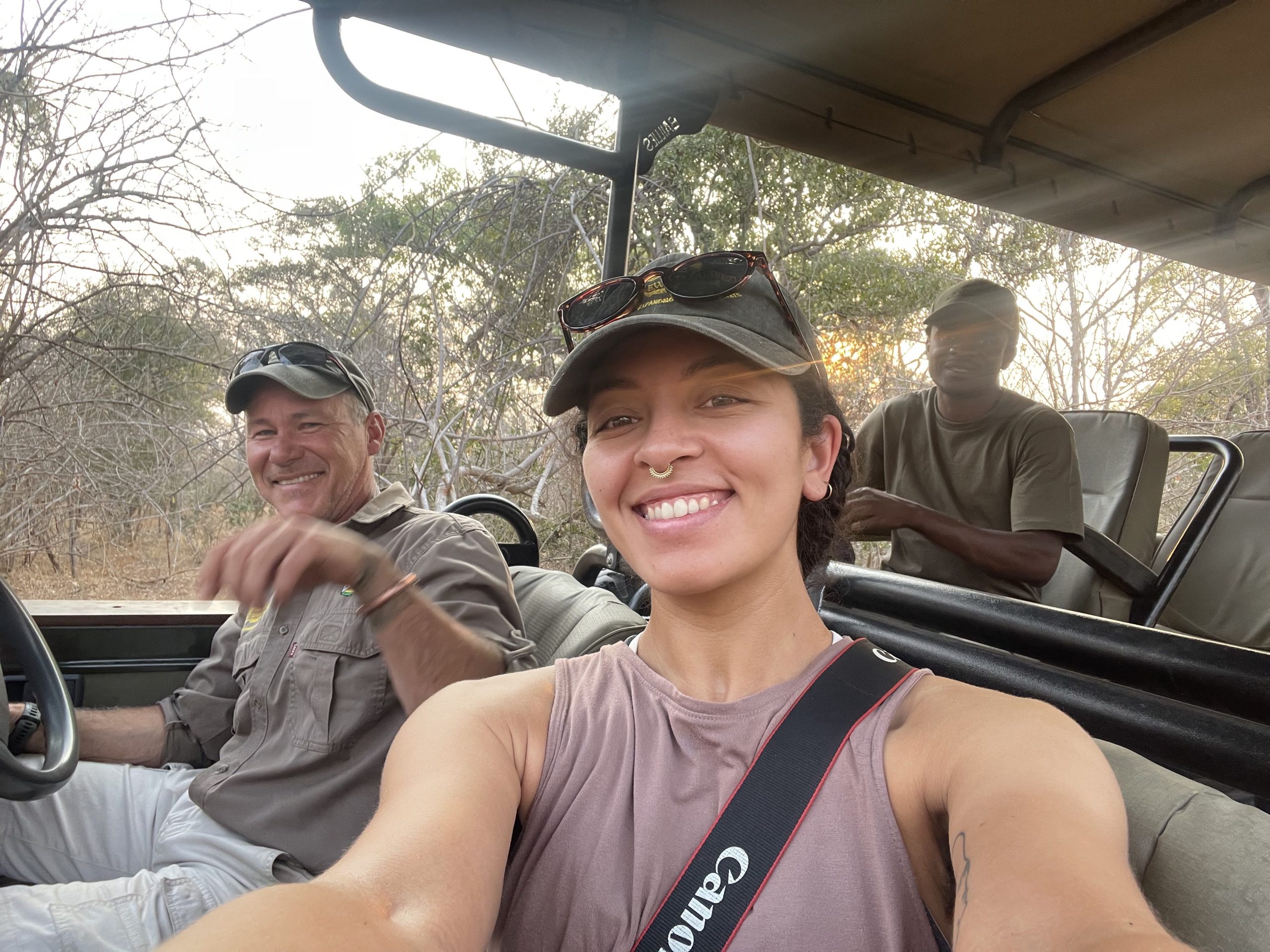Elephants are highly social with complex, matrilineal family structures consisting of a matriarch and her female descendants. Human impacts like hunting or retribution killings after instances of human-wildlife conflict disrupts these family structures, and evidence from our lab and others suggests the impacts of these social disruptions can last for decades and have cascading health outcomes like elevated stress levels, lower reproductive success, and reduced competitive ability. So, what happens when elephants from a population with hunting history are moved hundreds of kilometers from their homes? Over the next several years, I’ll be exploring how herd characteristics and social structures of both resident and translocated elephant herds determines the trajectory of translocation outcomes.
Last spring, my advisor, Dr. Sam Wasser, informed me that our collaborators, Dereck and Beverly Joubert of Great Plains Conservation, were aiding in a massive translocation effort of 3200 animals of various species. These animals were going to be culled unless someone could pay to move them elsewhere. Without hesitation, Dereck and Beverly set to fund raising to get those animals, including roughly 400 African savanna elephants, from south-eastern Zimbabwe approximately 630 km north to the Sapi Private Reserve (SAPI), a photo-safari managed by the Jouberts along Zimbabwe’s northern border. Over the course of the summer, 101 elephants of 13 herds were successfully moved to their new, resource-rich haven.

I had the amazing opportunity to visit SAPI in September 2022 and get to know the beautiful land along the Zambezi River, the incredible team at Great Plains Conservation, and the elephants that will be the focus of my life for the next several years. Most days, the researcher/ranger charged with my safety, Gordon Duncan, and I woke early to scour the land via land cruiser for our collared elephant herds. Gordon is from Zimbabwe, has a long history of wildlife experience, and essentially taught me everything I know about the region. Every day he introduced me to a dizzying array of plants (mostly acacia I learned) and animals, interspersed with local lore and legend.
Prior to leaving for this trip, when I would tell friends and family about my study, they would often interject, “elephants are so cute!”. After seeing them in the wild, I have to disagree. They are incredible, intelligent, and awe-inspiring, but “cute” is not a word I would use to describe them when they’re in the midst of an aggressive display. I’m not sure what I expected in terms of how I’d react to being around the world’s largest land mammal, but the immediate cold sweat that broke over my body for the first week was certainly not it. Besides their size and obvious power, the elephants are unnervingly quiet. Time and time again, we would be driving along roads through the bush and without warning, we’d pass a herd of 3-7 elephants. Disturbed by our sudden presence, they would walk away into the thicket only to disappear without a sound. Gordon called them “gray ghosts”.
For my study, I need to visually observe these silent specters for extended periods of time, recording behaviors and interactions between individuals and approaching groups (and eventually collecting fresh dung samples), but after nearly 3 weeks of effort, we had yet to successfully select a specific herd based on the matriarch’s GPS location, find the matriarch in the field using radio-telemetry, and observe the herd to collect behaviors from start to finish. Since the trip was mainly a troubleshooting mission, and I had certainly learned a lot about what wasn’t going to work, I was mostly ok with this, but on my final day in SAPI, we decided to give it one last try. Gordon, Thomas (the head ecologist for SAPI), and I checked the satellite data, selected resident herd 02 as a good target, and went out into the field for a final attempt at a focal herd follow. We parked the cruiser along the road and went in on foot with the radio receiver to pinpoint the matriarch and intercept her herd’s path to the river. Following the radio signal, we found ourselves at the base of a Balanites tree. These trees are favored by the elephants in the area as rest spots during midday. Standing at the base, one finds themselves in a clearing from years, possibly decades, of elephant use. Well-worn elephant trails radiate out from the center towards other destinations. Suddenly, we hear rustling in the bush about 10-meters away. We move quickly behind the cover of a tree and an old termite mound and watch as R02-01, the collared, resident matriarch, steps out of the bush and into the clearing with whom we presume is her subadult daughter. They sweep the ground with their trunks, picking up leaves and branches along the way to snack on. Hidden, we quickly take notes on distinct physical characteristics of the two cows and snap photos for later reference. Thomas whispers that he hears rustling in the bush again coming from our left, and 2 adult cows and a calf no more than a month old emerge into the clearing. In our hiding spot, we’re all holding our breath, barely moving, but smiling from ear-to-ear—having finally successfully found a collared herd and identified the members. Despite the near run-in with the matriarch who spotted us on our way back to the land cruiser, we finally had a success and our first proof-of-concept for my proposed observational methods!

In the meantime before I return to SAPI, I’ll be working with the folks at Great Plains Conservation and the monitoring team to prepare for the influx of the remaining 300 elephants (along with hundreds of other animals as well), and using the GPS telemetry data to understand movement patterns and habitat use differences between the resident and translocated elephants. In our changing climate, it’s important to understand the consequences of moving large numbers of animals, especially environmentally impactful ones like elephants. If keeping families together reduces distress and increases chances of success, the extra effort is worth it.


